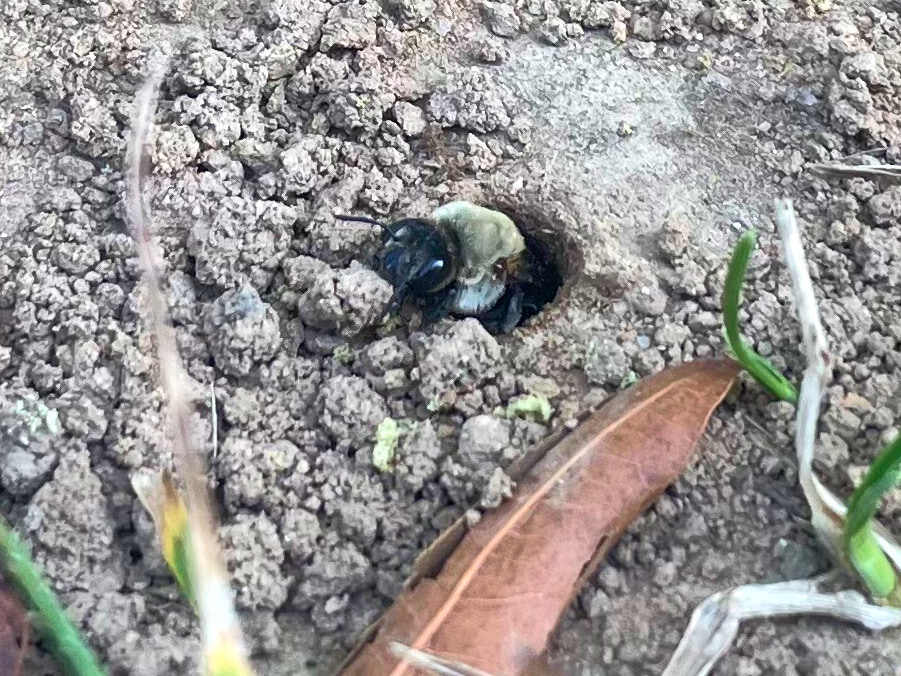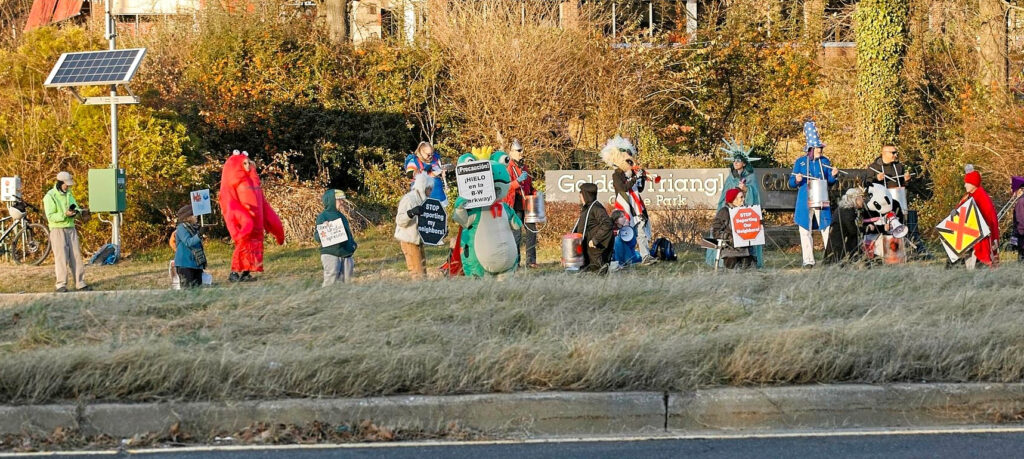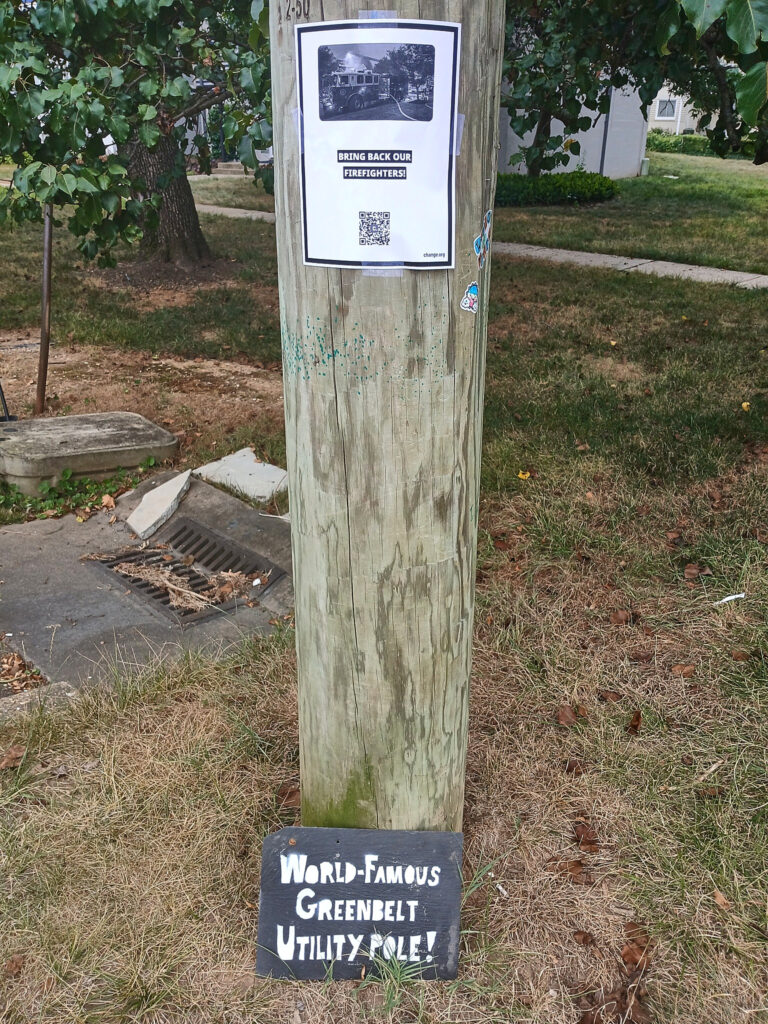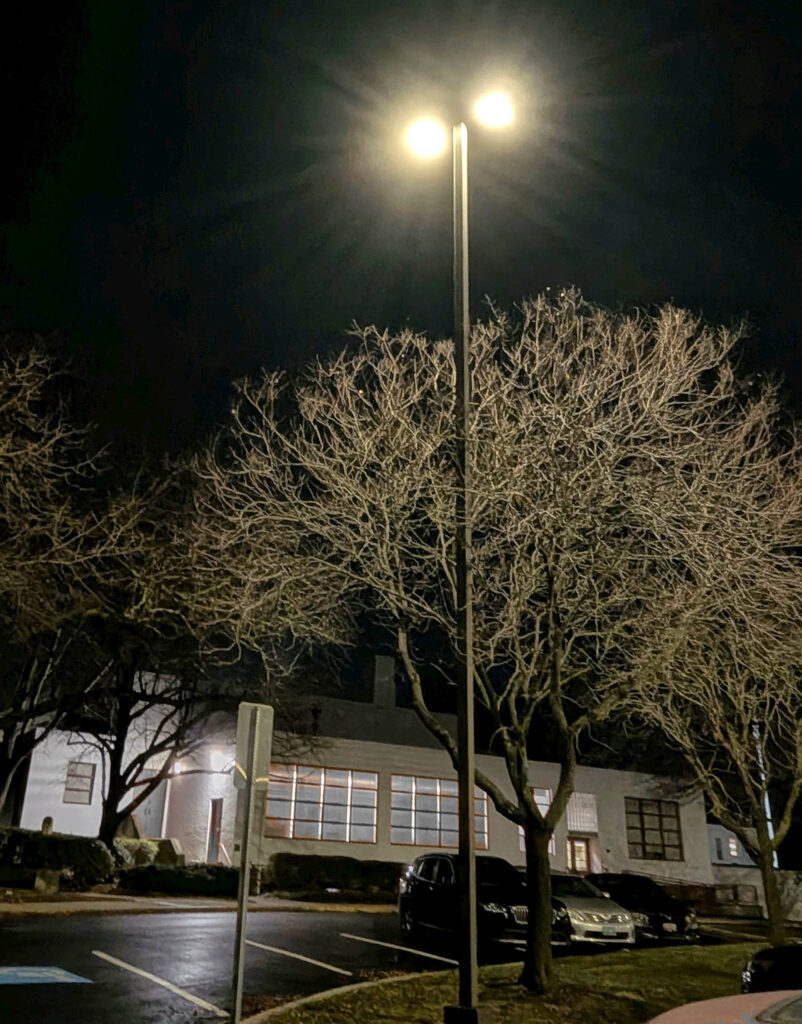Last week we heard from a resident about how ground bees were being treated in Greenbelt, after seeing workers spray a nest with RAID. “While their sudden appearance may have caused alarm, most ground bees are native, nonaggressive pollinators that pose little to no risk to the public,” said the reader. “Unlike wasps or hive bees, ground bees are solitary and rarely sting unless directly provoked.” We reached out to local bee expert Jay Evans to find out more.
“Ground bees are very seasonal and often confused for yellow jackets,” explained Evans, an award-winning research entomologist at USDA’s Bee Lab at Beltsville Agricultural Research Center.
Miner bees are a very common ‘ground bee,’ genus Andrena. Unless the distinctive yellow stripes of yellow jackets are visible, these bees are harmless, says Evans. Bumble bees also nest in the ground, and are slightly larger and create holes twice the size of miner bee holes. These might be more prone to sting if stepped on, he says, but even that is rare. Bumble bees usually make their nests in more out of the way places, unlike the disturbed grassy areas miner bees might choose. “If there are tens of holes it won’t be wasps or bumbles,” said Evans, “those would be miner bees or sometimes sweat bees.” Sweat bees nest in the ground or sometimes in rotting wood and are also typically not aggressive, only stinging in self-defense.
Over the weekend, Evans found miner bees on the lake peninsula. They were busily pulling pebbles from their nest. Suzanne Batra, Greenbelter and retired USDA bee expert, called them “working mothers,” Evans recalls. “They build the homes, clean the tunnels then collect pollen for the eggs of offspring they will never meet,” he explained. “Those boys and girls will mate next July, the boys die then and the females start tunneling.”
These seasonal ground bees are “non-stinging almost as a rule,” says Evans, “and will be quiet again in two weeks.”





